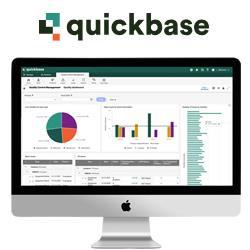The main challenge for manufacturers of diesel engines and generator sets is thus to reduce the level of harmful substances, while maintaining similar or better performance levels.
Power vs. Emissions - The Genset Tug of War
Malavika Tohani | Frost & Sullivan
| The main challenge for manufacturers of diesel engines and generator sets is thus to reduce the level of harmful substances, while maintaining similar or better performance levels. |
| Power vs. Emissions – The Genset Tug of War |
|
Malavika Tohani , Energy and Power Systems Group, Frost & Sullivan |
The Green Perspective ‘Climate change’, ‘Global warming’, ‘Environment-friendly’ and ‘Green issues’ are words that have become a part of our everyday vocabulary. The principal agenda of governments the world over is combating climate change, protecting the environment and ensuring sustainable development. Growth and development are a double-edged sword bringing with it economic prosperity on one hand and environmental degradation on the other. A rise in the standard of living of the people implies greater needs, thus putting immense pressure on available natural resources. The problem is especially acute with regards to energy consumption as well as generation. The recent EU binding target of reducing greenhouse gas emissions by 20 per cent and generating 20 per cent of the energy from renewable sources by is a significant step to curb climate change. Snapshot of the European Gensets Market The European gensets market was worth approximately €1.1 billion in 2007, according to a recent Frost & Sullivan analysis. Diesel gensets accounted for approximately 65.0 percent of the share in 2007, as depicted in the chart below.
Genset Market: Percent of Revenues by Genset Type, Europe, 2007 Although the growth of gas gensets is expected to be at a much faster rate in the coming years, diesel gensets still hold the majority share in terms of revenues.
Genset Emissions: Effect of Pollutant The impact of the pollutants on public health as well as the environment has provided an impetus for the government and other organisations to enforce certain legislation and regulations relating to diesel engine emissions for both on-road and non-road equipment. Regulations also exist with regard to the level of noise emitted by gensets. Directives and Regulations for Non-road Equipment
Efforts to curb diesel engine emissions are being taken for the past several years. However, with the environmental aspect gaining public prominence only recently, stricter and tougher legislation is being put in place for even non-road equipment such as generator sets. The main challenge for manufacturers of diesel engines and generator sets is thus to reduce the level of harmful substances, while maintaining similar or better performance levels. Although the Non-road Machinery Directive 97/68/EC was first propagated in December 1997, and Stages I and II were implemented in 1999 and from 2001 to 2004, generator sets were not covered by these standards. Equipment covered consisted of forklift trucks, bulldozers, non-road trucks, road maintenance equipment, snow plows and so on. However, in December 2002, the European Parliament adopted Stage II of the Directive 2002/88/EC, which included portable and rental gas and diesel gensets, but only in the power range of 18 to 560 KWm. This regulation came into effect on 1 January, 2007. Currently, stationary gensets are exempt from these EU emission regulations. In contrast, in the United States, stationary diesel engines for generator sets had to meet Tier 1 emission regulations by the end of 2006 and from 2007 to 2010, must comply with Tier 2, 3 or 4 regulations depending on the size. Since the trend is for harmonisation of standards across the globe, it might be justified to expect similar standards in the near future on the European side as well. Stage III of the European emission regulations will be adopted in two stages; IIIA and IIIB, over the period 2006 to 2013. For non-road gensets, that is, rental gensets, Stage IIIA regulations become effective only from 1 January, 2011, for the power ranges 18 to 36 KWm and 75 to 560 KWm. Gensets ranging from 37 to 74 KWm must satisfy Stage IIIA regulations from January, 2012. The effect of these regulations can be seen mostly in the form of NOx and HC reduction, with emissions reducing by 43.0 per cent for certain power ranges. The chart below summarises the various directives and regulations that have been passed over the years for non-road generator sets, along with the specified emission level for each substance.
Genset Emissions: Directives and Legislations Regarding Non-road Gensets, Europe Conclusion The key challenge facing genset and its component manufacturers is balancing the environmental impact with factors such as performance level, reliability, durability and price. The need for greater power is pushing the maximum size of generator sets. Manufacturers are constantly investing time and resources into research and development (R&D), in order to improve the in-cylinder design, fuel delivery and air-handling processes for optimised combustion. Various options are being explored in terms of using plant oil-, LPG- and hydrogen-driven gensets that have minimal environmental impact. The future is all set to welcome these greener, cleaner and quieter generator sets. Malavika Tohani is Programme Manager, Energy and Power Systems Group at Frost & Sullivan, in London. If you would like more information about this subject and related research and about our Energy subscription, please send an e-mail to Chiara Carella - Corporate Communications, at chiara.carella@frost.com with the following information: full name, company name, title, telephone number, e-mail address, city, state and country. Requested information will be sent by email upon receipt of this information. |
The content & opinions in this article are the author’s and do not necessarily represent the views of AltEnergyMag
Comments (0)
This post does not have any comments. Be the first to leave a comment below.
Featured Product




